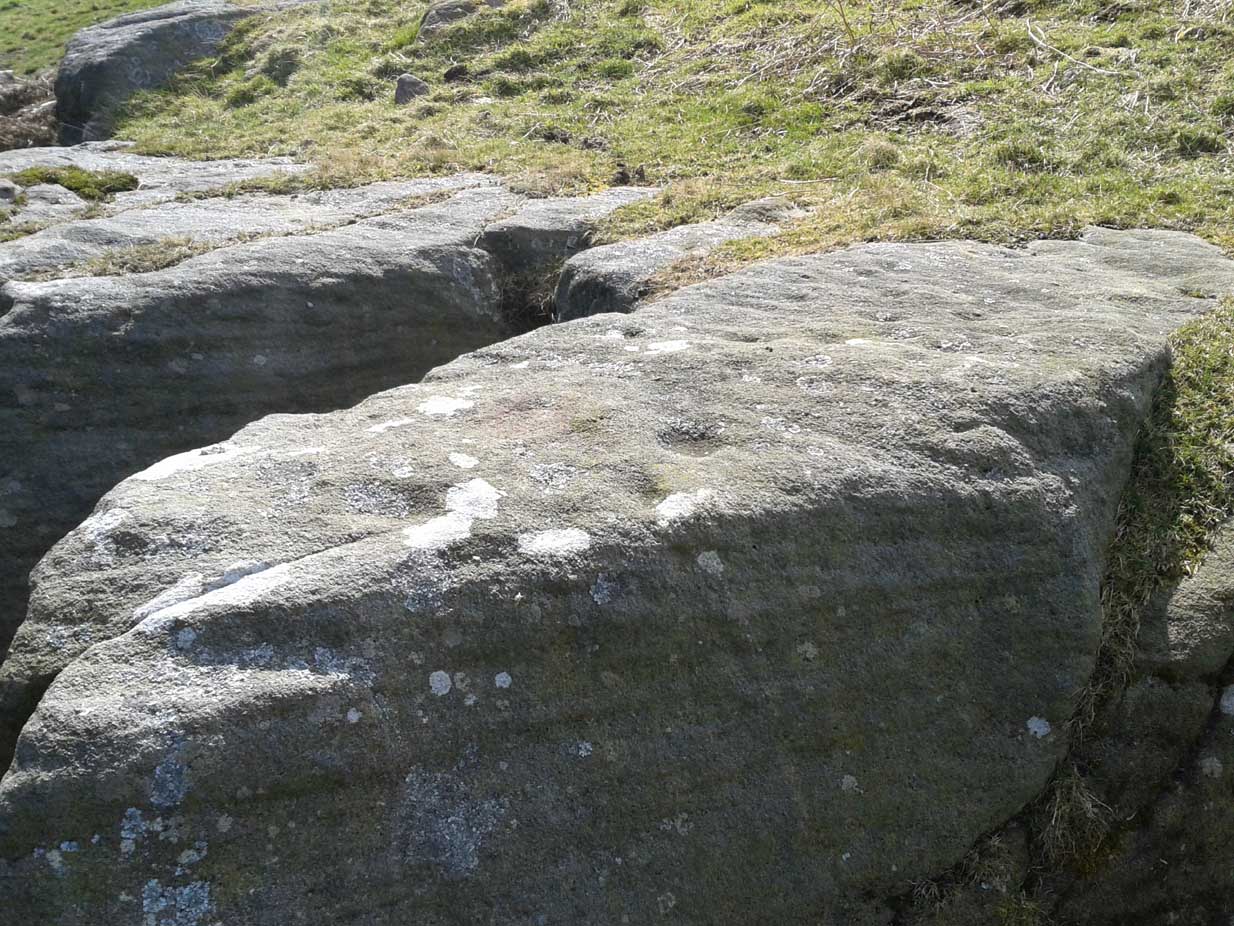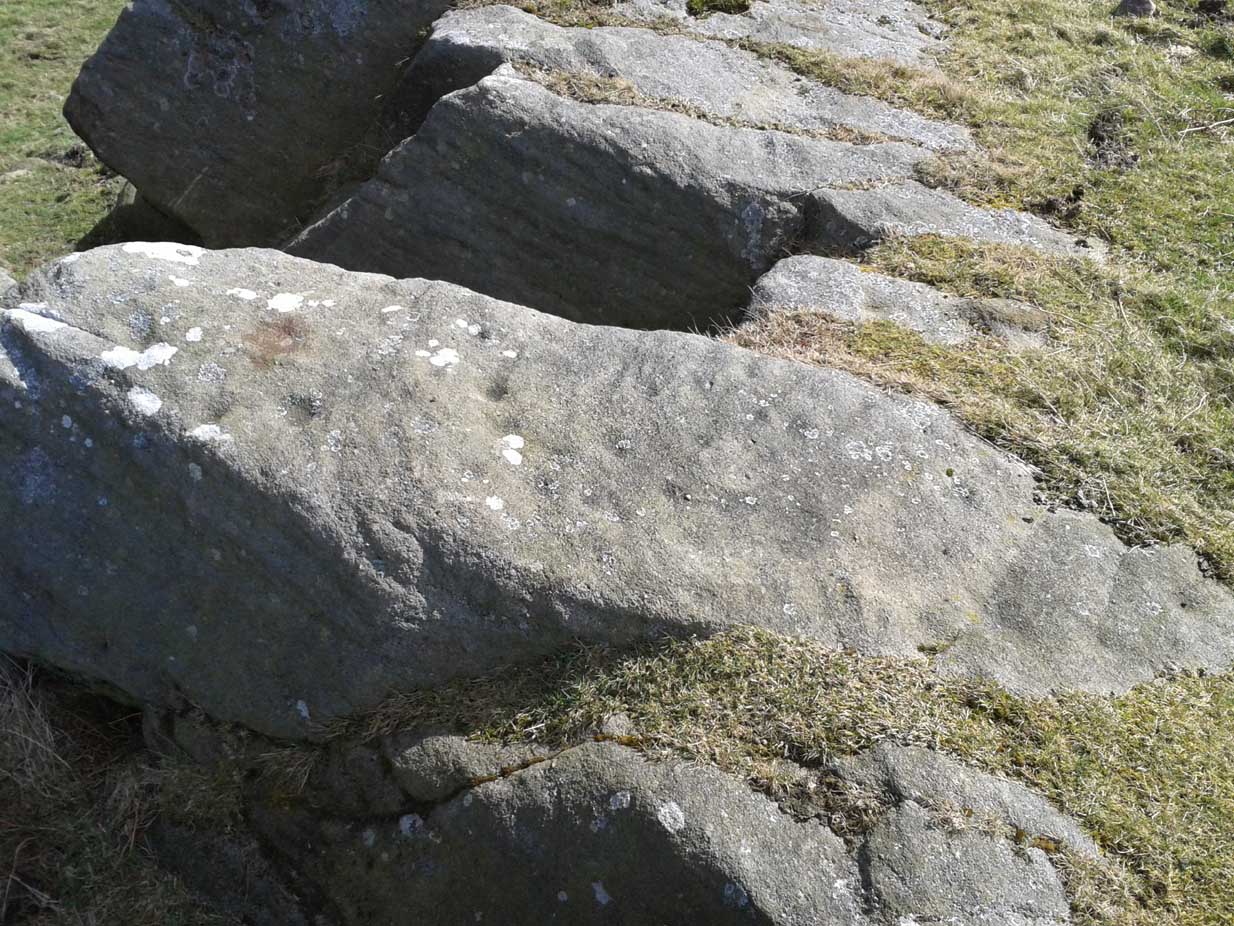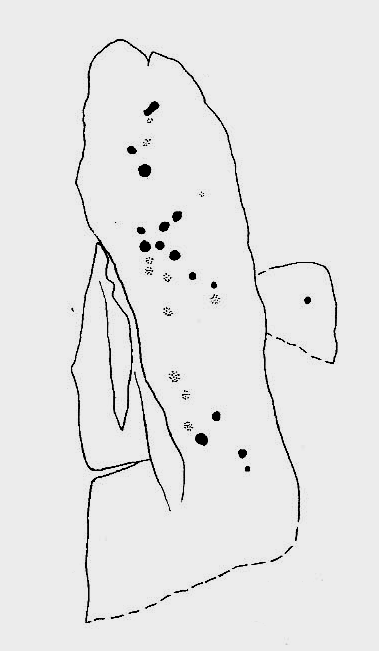Cup-Marked Stone: OS Grid Reference – SE 18105 51210

From Otley, take the road north across the River Wharfe up and up, heading towards Askwith Moor. As the moorland opens up ahead of you, at the crossroads turn right along Snowden Carr Road and literally ¾-mile along (1.25km) where a track on your right goes to Carr Farm, on the left-side of the road is a gate. Go through here to the Naked Jogger Stone and walk up the rocky ridge ahead of you, alongside the walling (as if you’re going to the Sunrise Stone), and about 20-30 yards up you’ll reach this carving.
Archaeology & History
Best visited on a clear day, this is one carving amidst a small cluster of cup-marked petroglyphs found along the small geological ridge between the Sunrise Stone and Naked Jogger carving (none of which are as impressive as those two!). This particular design consists of a number of faint cup-marks— between 17 and 25 of them—reaching along the horizontal surface, with no distinct formal pattern, as usual. The carving continues beneath the encroaching soil.


It seems to have been described for the first time by Stuart Feather (1973); then subsequently in Boughey & Vickerman’s (2003) survey, in which they attach a single cup-marking on an adjacent rock into the matrix of this design—but the two rock surfaces are distinctly separate. This apart, their description tells, briefly as always: “Large long rock which may be outcrop, with hill falling away steeply below. Seventeen worn cups.”
References:
- Boughey, Keith & Vickerman, E.A., Prehistoric Rock Art of the West Riding, WYAS: Leeds 2003.
- Feather, Stuart, “Askwith, W.Yorkshire,” in ‘Yorkshire Archaeological Register’, Yorkshire Archaeology Journal, volume 45, 1973.
© Paul Bennett, The Northern Antiquarian
The map could not be loaded. Please contact the site owner.
When I see markings as eroded as those are, I tend not to trust my judgement and decide they must be there due to some odd quality of the rock at the time it was being formed. I assume that here all indications of pecking have worn away? Apart from the proximity of similarly rocks, what helps you to determine that these, or other similar markings elsewhere, are man-made?
I know what you mean. But if you saw these, or mebbe if you’d seen as many as I have down the decades, the probability of them as artificial cup-marks here is high. …I am more and more skeptical of many cup-marked stones – not least from my own errors in the past, but increasingly from less reliable ‘professionals’ or archaeologists who add sites to regional SMRs when they’re Nature’s own workings. This site was seen by Graeme Chappell and me, and Stuart Feather before us, and it’s very likely authentic. On the ‘down’ side of this particular issue: I have tons of photos of purely cup-marked stones, some of which I can’t work out if they’re Nature’s handiwork or not, that will never see the light of day and aint in any catalogues, simply cos I’m unsure of their veracity. We truly need effective scientific geological analysis of each petroglyph. But even then, when I went with one to see a curious unrecorded carving on Morton Moor a few years back, in the hope we could ascertain whether it was natural or man-made, after an hour at the place she uttered, “I truly don’t know!” AAARRRGHHH!!! (so it aint on TNA or anywhere else) Petroglyph research needs multidisciplinary analysis, as all good students know.
(so it aint on TNA or anywhere else) Petroglyph research needs multidisciplinary analysis, as all good students know.